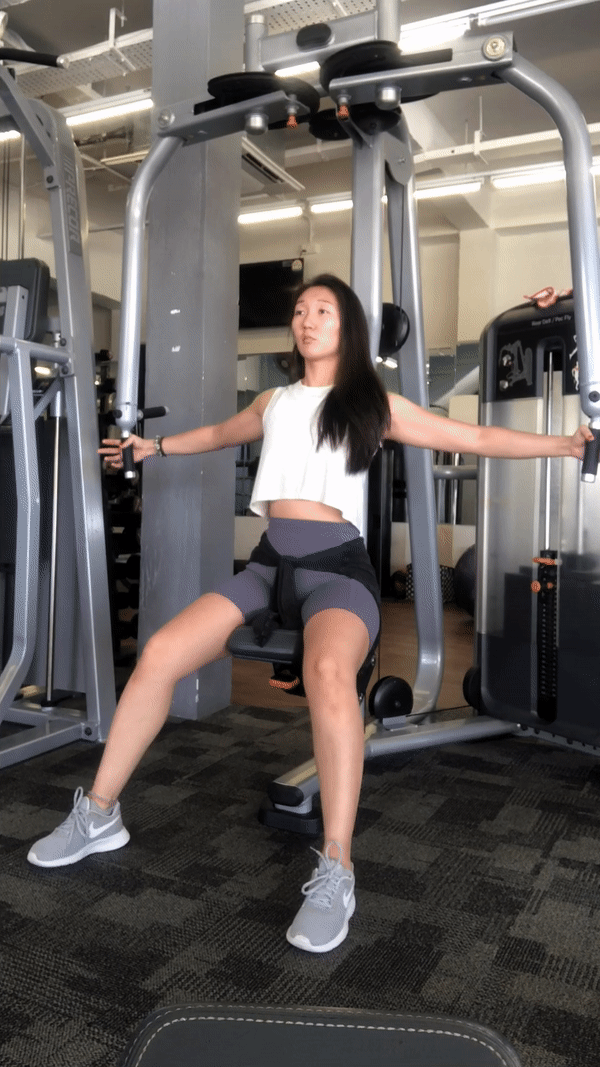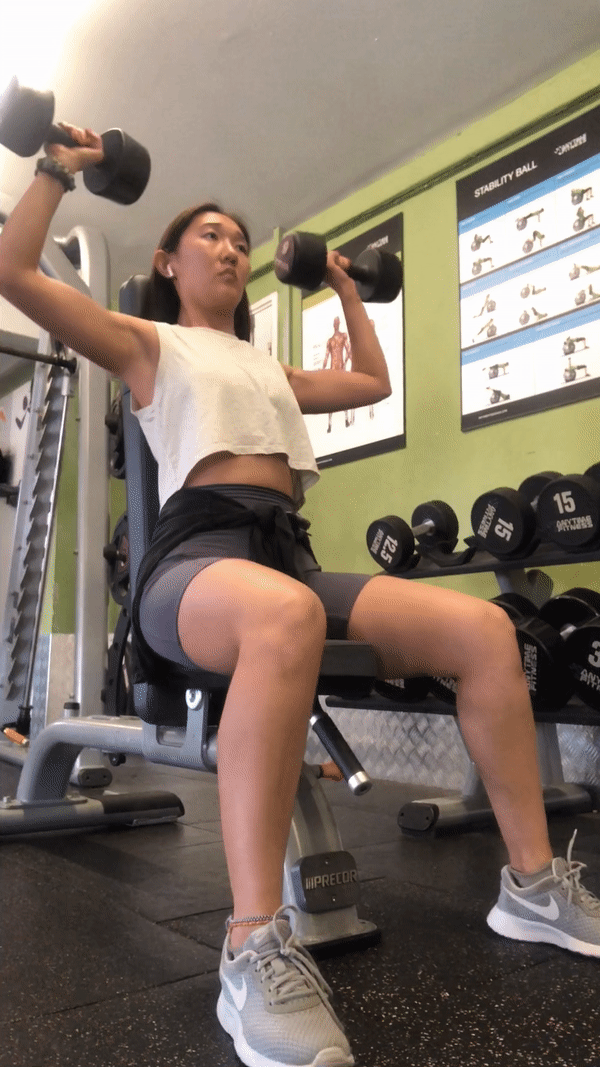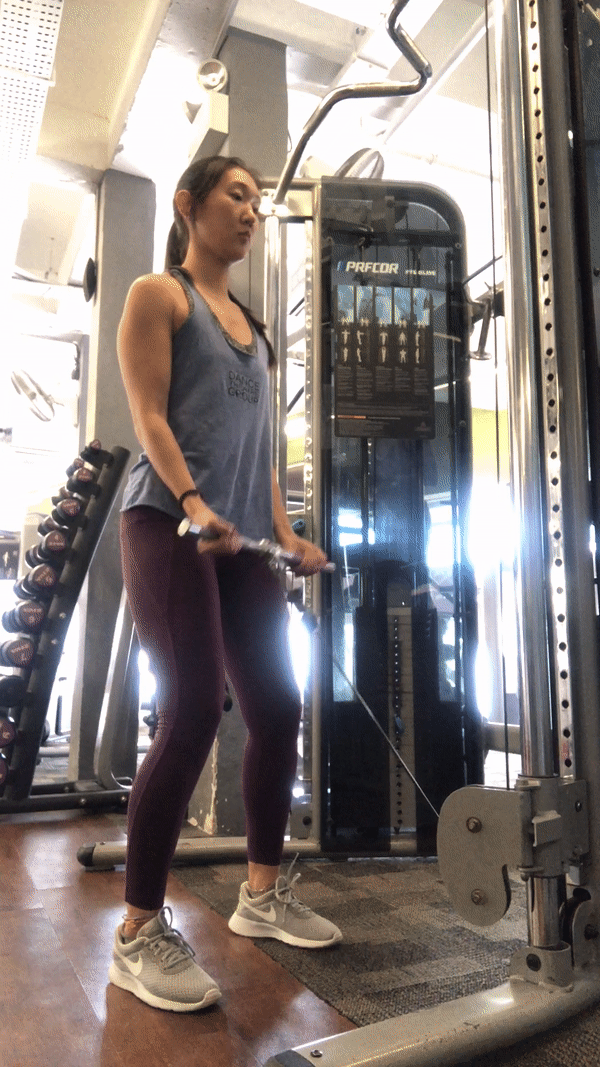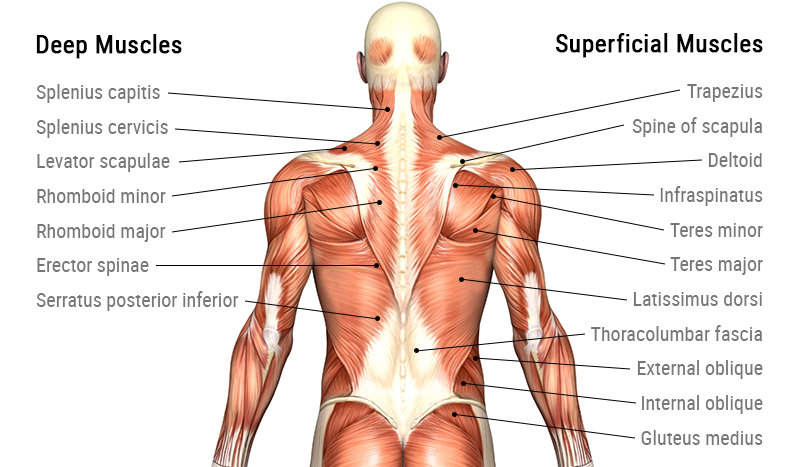For some reason, women tend to neglect exercising and building strength in their upper body (minus the core and back). Conventional beauty standards set the example of thin-armed women with a toned back and washboard abs, in addition to a killer butt and long legs. In my experience, this is also the case in the ballet world.
Dancers and women in general are afraid of training for strength in their upper body for fear of developing thick arms and bulky shoulders. Like all of sudden if you do some bicep curls, you’ll turn into the Hulk. I’m here to tell you that is completely false! Any sort of resistance training does not automatically equal hypertrophy (increase in muscular size). Lifting weights can increase muscle strength and endurance without a huge visible increase in muscle size.
Moreover, dancers don’t need to do heavy weight upper body exercises for the goal of hypertrophy. Our cross-training goal of course, is for better performance in dance, meaning better movement quality and improved athleticism, whilst also becoming more resilient to injuries. This encompasses both muscle endurance and strength. (I wouldn’t say power is really necessary for a female dancer’s upper body, but it is extremely important for lower body!) This is accomplished through functional exercises with lighter loads and higher reps. Other popular maximal strength upper body exercises like bench press is not necessary for female dancers. So really, you won’t look like a bodybuilder.
In addition, strength training can help your dancing in more ways than you think! A dancer’s upper body is their main vehicle for artistry through port de bras and epaulement. Beautiful and fluid port de bras comes from strong back and shoulders. Posture is imperative in ballet, and doing more upper body exercises that work the arms, shoulders, and chest can also indirectly reinforce your posture and core. Upper body exercises are also very useful for developing ballet motor skills and coordination like port de bras patterns for pirouettes.
If you ask me, my fear is not large gorilla arms with working out the upper body, but actually the opposite – flabby upper arms due to no muscle at all! Due to biological differences, women tend to have more body fat in their upper arms than men. But you can work to reduce that fat by increasing your lean body mass (muscle) through training! If “bat wings” have now become your new pet peeve since looking in your bathroom mirror, then let’s hit the weight rack and make gains!
Muscular System
This is a huge diagram of the human muscular system:

But today we will only be looking at the upper half, above the torso.
Let’s zoom in on four major areas: chest, back, shoulders, and arms. (Technically core is upper body, but core is so important for dancers that it will make up a separate blog post):
You can see illustrated the difference between superficial/global muscles on the surface and deep/local muscles located on or around the spine. All of the compound exercises detailed below exercise both types of muscle systems, with deep muscles acting to stabilize the trunk over being the primary force. The upper body is filled with huge bundles of muscle that if we don’t exercise them like we do the lower half of the body, they become neglected, resulting in imbalance.
Compound Exercises
Let’s go through some exercises that will target each of the major upper body areas and muscle groups that will help better your dancing.
1. Back Raises / Cobra
Main muscle group: back, shoulders and some glutes
Movement pattern: extension
Equipment: optional theraband and yoga mat
Related ballet steps: any back extension movement like arabesque or cambre
Progression: stability ball cobra

For cobra yoga pose, you arch your back assisted with your hands on the floor. For back raises, try to archive the same arch without using your arms to push the floor away. For dancers, it is important to have a strong yet flexible back and trunk for all of the cambres and arabesques we need to do, specifically in an extension position. This exercise combines strength with flexibility – flexibility to arch the back into extension, and strength to move through and hold the position.
Make sure to do a thorough warm up before starting your sets and reps. I like to do 5-10 cobra poses, 5-10 cat and cow poses, and stretch for 30s in child’s pose. I also like to hold a band between my hands and rotate my forearms outward so my thumbs are pointing up. This helps me really think about squeezing my shoulder blades together and pulling them down as I arch up, keeping the tension out of my neck and chest open.
2. Rear Delts or Reverse Fly
Main muscle group: shoulders, triceps
Movement pattern: horizontal abduction
Equipment: machine or cables
Related ballet steps: port de bras, specifically Swan Lake style port de bras
Progression: single arm rear delts

Besides intricate and detailed choreography, Swan Lake is considered the most difficult ballet to dance because the swan port de bras is so hard to master. Swan port de bras are very stylized and utilizes the upper body muscles in a different manner than basic port de bras – the arms often have to move in an extended range of motion behind the body, creating the look and feeling of bird wings.
Luckily for you, rear delts is the perfect exercise to practice your swan arms! This exercise moves your arms along the transverse plane of motion in a horizontal abduction motion. Since most port de bras don't include this particular movement pattern, especially moving your arms behind your body, this exercise helps to create more flexibility and strength in your joints.
Since the rear delt movement pattern is not something I’m used to, I always make sure to stretch my arms before commencing. I like to do 5-10 arm circles each way, followed by a series of arm stretches for 30s – tricep stretch, shoulder stretch, and chest stretch. Remember to hold your posture tall and keep the shoulder blades depressed when doing this exercise.
3. Chest Fly
Main muscle group: chest
Movement pattern: horizontal adduction
Equipment: machine or cables
Related ballet steps: port de bras, specifically pirouette preparation positions
Progression: single arm chest fly (this one feels and looks like pirouette preparation) or standing chest fly

Chest fly is the reverse of rear delt – the opposite movement pattern (horizontal adduction). This movement pattern is very common in ballet – first and second position port de bras! Chest fly helps to build strength in the pectoral and arm muscles by providing resistance when you open and close the arms. This is very important to visualize and feel when doing the exercise as this movement pattern is directly connected to pirouette preparation port de bras.
When doing chest fly, I like to rapidly move to first position (concentric action) and hold for a couple counts (isometric stabilization), before slowly opening to second position and resetting (eccentric action). This way, the muscles have to engage faster and with more power, before stabilizing and unloading – mimicking what your arms need to do for pirouettes. Pirouettes start in the preparation position, then the arms close to first position quickly. Arms are then held there for the turns before returning to the finishing position. By closing the arms faster, you will produce a more efficient and powerful force of muscle movement to rotate your body in the pirouette. Now, you just need to coordinate these arm movements with your legs and head in your pirouettes. You may find yourself able to squeak out an extra pirouette when you return to ballet class! (If you really want to recreate this pirouette port de bras pattern, do your chest fly with one arm at a time)
4. Push Ups
Main muscle group: chest, biceps, shoulders, core
Movement pattern: extension; push
Equipment: optional yoga mat
Related ballet steps: core engagement and overall upper body endurance
Progression: other push up variations like incline or cricket leg push ups

If you don’t have access to big gym equipment and machines for the above exercises, just stick with the classics – simple body weight exercises. Push ups is a very good compound exercise targeting the entire upper body. A closed chain exercise, you first need to be able to hold yourself off the floor in plank, before thinking about lowering and lifting the body.
Previously, I mentioned in another blog that plank is the most useful exercise for dancers. The core (pun intended) of a push up is the plank position. Whether you can fully bend your elbows or not, really focus on maintaining your plank during this exercise. The stronger your plank is, the faster you will progress in your push ups. So actually, push ups is a way for me to include a core exercise in this blog under the guise of an upper body exercise (not that you shouldn’t engage your core in the other exercises because you absolutely should!)
5. Cable Row
Main muscle group: lats
Movement pattern: flexion; pull
Equipment: cables
Related ballet steps: posture engagement
Progression: standing cable row

I love back exercises because I love the feeling of a tall posture with shoulders retracted and an open chest – which is the ideal posture when dancing! Cable row is a great exercise to nail this feeling as it is done upright.
Try a seated cable row first and think about lifting up in your core, holding your back erect, open chest, and retracted shoulders. Squeeze your shoulder together when you pull the cable towards your belly button. Progress to standing cable row like I do here to increase instability and work on your balance.
6. Lat Pulldown
Main muscle group: lats
Movement pattern: flexion; pull
Equipment: machine or cables
Related ballet steps: posture engagement and port de bras
Progression: if you want a real challenge, go for (assisted) pull ups

Lat pulldown is a great exercise for learning how to feel and engage your lats – the muscles that come underneath the armpits and wrap downwards to the lumbar spine. Because the lats cover most of the back surface area, they are super important in all stabilization and movement in the upper body, around the spine, and coordinating both the upper and lower body.
Lat pulldown is another exercise to practice executing our ballet posture and thinking about our port de bras positioning overhead (fifth position). Keep the elbows open when gripping the bar, just like in fifth position. Once I started doing more back exercises, especially targeting the lats, I I felt stronger in ballet class. My trunk felt more stable and I had more stamina holding my posture in combinations. Remember, in ballet we are constantly “lifting up” to sustain our posture whilst dancing. Without back muscle strength and endurance, our posture can become compromised, which then compromises our ballet technique. This is particularly important when doing big jumps in grand allegro!
7. Overhead Press
Main muscle group: shoulders
Movement pattern: extension; push
Equipment: machine or free weights (dumbbells or barbell)
Related ballet steps: fifth position port de bras, posture in fifth position
Progression: standing overhead press

Overhead press is the push exercise opposite to lat pulldown (a pull exercise). They each work the same muscle groups but in different fashion; remember that muscles play different roles depending on the exercise. The primary force for lat pulldown are the lats, but for overhead press, the shoulders are the agonists and the lats are the antagonists – opposition force. Push and pull are two fundamental movement patterns, so it’s important that we master these over all planes of motion.
For lat pulldown, the overall feeling are the shoulders and back drawing down towards the ground, in the same direction as the movement. You want this same feeling for overhead press when moving the weight upwards against gravity. As a result, overhead press is much more difficult than lat pulldown and should be progressed to only after a certain amount of strength and stability is met in, especially in the core and back.
Even though the shoulder muscles are the primary force movers in this exercise, you don’t want them rising up towards your ears. Keep your posture with a solid trunk – your core is key to this exercise. A weak core will not only make the exercise more difficult to perform, but also make you prone to injury. Use the adjustable gym bench for this exercise to align your back with the seat, reinforcing your posture. Progression for overhead press can be from a seated to a standing position.
Isolation Exercises
The above exercises are almost all compound exercises. However, it is good to incorporate some isolation exercises in your routine to target specific muscles and feel how they engage. In this case, let's look at those bis and tris:
8. Your favorite bicep curl
Main muscle group: biceps
Movement pattern: flexion; pull
Equipment: machine, cables, or free weights

A little bicep curls never hurt nobody! Building up a little bicep muscle can help with feeling resistance in your port de bras. And also make your arms look well-scupted and defined.
There are many different variations of curls – dumbbells, cables, barbell, palm up, hammer curls… pick your favorite one! Initiate the curl without moving your whole body, just isolating the arms, and go for full range of motion. There’s no shame in doing light weight to curls! Remember, we’re not aiming for hypertrophy but lean muscle mass through endurance.
9. Your favorite tricep exercise (extension, pushdown, skullcrushers)
Main muscle group: triceps
Movement pattern: extension; push
Equipment: machine, cables, or free weights

As a very intelligent bro once told me, if you’re gonna get a bicep pump, you’re gonna want a tricep pump. Can’t do one without doing the other! Triceps are my favorite muscle to exercise because it is toning the underarm flab! Tricep exercises are also fun and seem easier than biceps because they’re push exercises. The exercise that I do here is tricep pushdown. It’s great because you’re pushing the weight downwards instead of lifting it upwards – “lifting” in the same direction as gravity!
Triceps are also very important in ballet port de bras because they help hold up your arms especially in second position. If you find your arms drooping in second position, lift your elbows and engage your triceps!
TL;DR:
Don’t be a simp and workout your upper body because you won’t actually get big and it can really help your dancing
Sample Upper Body Workout (reps x sets)
To do all the exercises above in one workout would be too much to be effective. I have created two sample workouts below.
Upper Body Var. 1
Overhead Press | 10 x 5
Chest Fly | 10 x 4
Cable Row | 10 x 4
Tricep Pushdown | 10 x 4
Back Raises | 10 x 5
Upper Body Var. 2
Lat Pulldown | 10 x 5
Push Ups | 10 x 4
Rear Delt | 10 x 4
Bicep Curls | 10 x 4
Back Raises | 10 x 5







Comments